Storing vinyl records safely is essential. Whether it’s for day-to-day accessibility or long-term in storage boxes, you must store them correctly to ensure they last a lifetime and beyond.
You’ve worked hard to afford your collection, and the chances are, you’d like them to remain in great condition for as long as possible.
If you’re anything like me, you’d probably like to pass them on to your children eventually.
The good news is, a great deal of record care comes down to proper storage, and for the most part, it’s simple common sense.
In the following article, we explore how storing vinyl records correctly will avoid a plethora of common issues, including scuffs, scratches, warping, sleeve damage, and much more.
Guide Navigation:
PART 1 – How to Store Vinyl Records Properly
PART 2 – Vinyl Record Storage Cabinets & Containers
PART 3 – Creative ideas for storing vinyl records
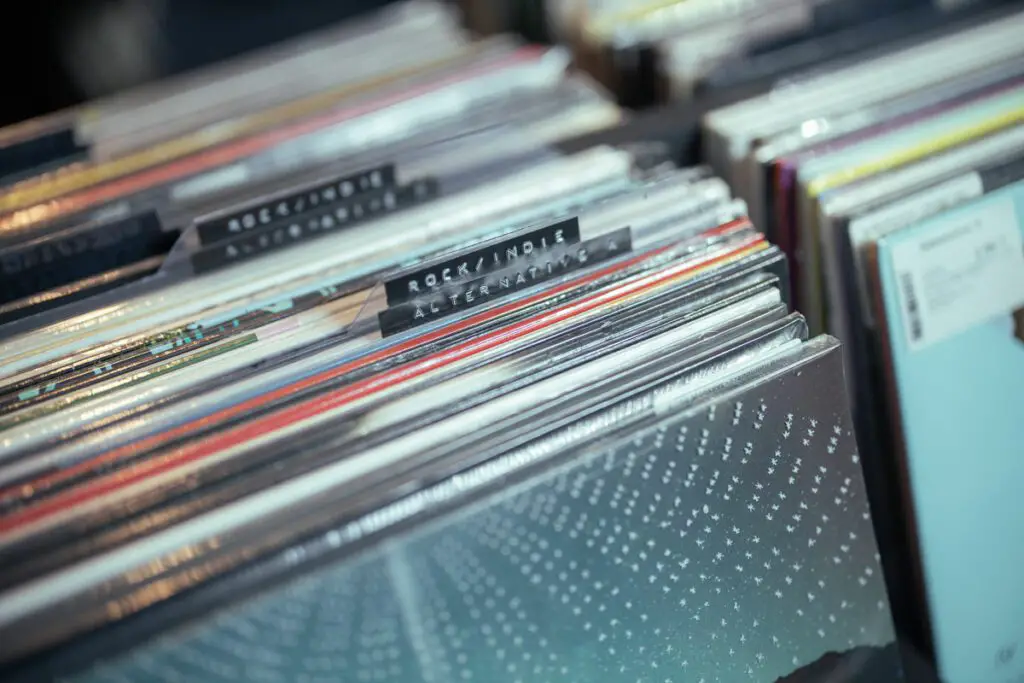
PART 1 – How to Store Vinyl Records Properly
The Basics:
To protect your records, always ensure you store them upright in a vertical position; never stack them horizontally on top of each other, as this will lead to warping over time.
You also need to ensure your records are stored in a stable environment without exposure to extreme temperatures, ultraviolet light, or high humidity.
Lastly, to enhance the protection further, we need the best quality inner and outer sleeves to protect both the vinyl record and the outer artwork.
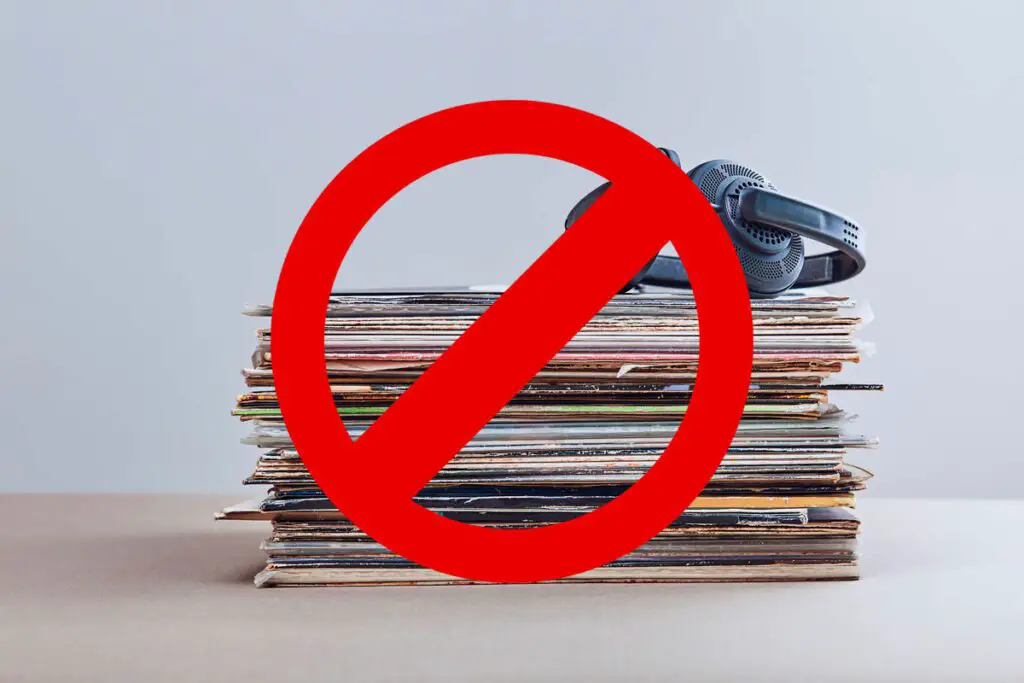
The Correct Environment For Storing Vinyl Records
This is by far the most important factor in safely storing records; more important than any cabinet or accessory. We can break the topic down into three core pillars for record storage success…
Get the Temperature Right
There is some debate about the optimal temperature for storing vinyl records. But all collectors agree, extreme temperatures, and particularly high heat, should be avoided.
Keep records stored indoors at around 65 to 70 degrees Fahrenheit (18°C – 21°C) if you can.
It’s best to avoid areas of the home where temperatures can fluctuate, such as an attic, loft, basement or garage. I’d also recommend avoiding close proximity to external walls, as particularly in older houses, you can run a high risk of them picking up mold or mildew.
This last one might sound obvious, but you should always avoid storing vinyl records near radiators, air vents, or any other variable that could pack out heat and result in warped records.
Avoid Ultraviolet Light
Closely related to heat is light. Aim to keep your precious records away from windows and direct sunlight, which can destroy your collection very quickly if left unchecked.
Sunlight will also rapidly fade the colors on your artwork; we’ve all seen those second-hand records with faded spines from light exposure over the years.
Control Humidity
Depending on where you live, humidity might be an issue. It’s best to store records in a relatively dry environment; after all, you don’t want moisture-causing mold or mildew problems on the jacket or record surface.
All the same, if the environment is too dry, static could cause you a headache. A moderate stable environment is best – usually around 35-40% relative humidity.
If you’re unsure, you can purchase a hydrometer to monitor the humidity around your record storage area. If you can afford to do so, and you have the space, climate control via a de-humidifier is a great way to control humidity.
Store Your Records in the Best Possible Record Sleeves
Inner Sleeves
Inner sleeves are the most critical component in proper vinyl storage, as they’re the only product that will come in direct contact with your records.
Most new records are shipped with standard paper inner sleeves, which transfer paper flakes onto your record’s surface and can even cause surface wear over time.
The safest option is to replace the standard sleeve with a higher-quality polyethylene inner sleeve that will protect against static build-up and contamination.
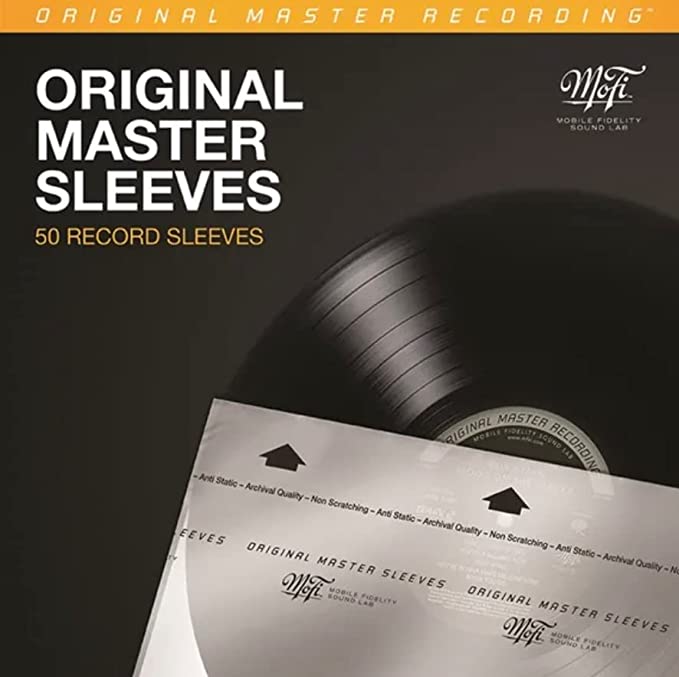
The original polyethylene inner sleeves by MoFi are now considered an industry-standard record sleeve. So much so that almost identical competitor copies are now extremely common (and often cheaper) Check out the Invest In Vinyl Sleeves, which are some of the best inner record sleeves based on the MoFi “rice paper” style.
Outer Sleeves
To protect your artwork, and prevent airborne dust from contaminating the record when stored, you also need to invest in outer record sleeves.
Traditionally, collectors would buy thick plastic PVC outer sleeves – don’t do that!
PVC-based products can cause contamination and serious damage to your records. The theory is, because vinyl records are also made from PVC (an oil-based product), the two items can merge given the wrong climate. The result is a misting effect on the record, which is audible as hiss.
The best outer record sleeves are made from Polypropylene or polyethylene. Polypropylene is your best bet for crystal-clear clarity that really makes the artwork pop!
Vinyl accessories company, Big Fudge offer a good affordable solution here with their crystal clear outer sleeves.

The low-down on sleeves: Material quality is key. Always check to make sure you’re buying polyethylene inner sleeves and polypropylene outer sleeves.
Remember to clean your records before placing them in a new sleeve, and replace the stock paper sleeves as soon as possible with all your new record purchases.
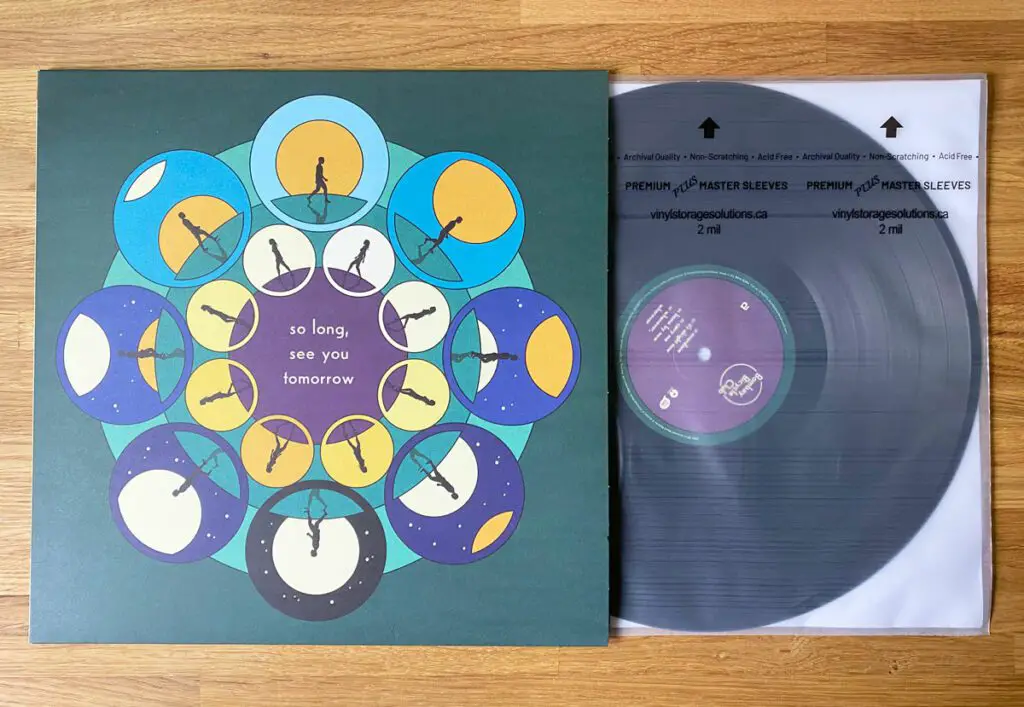
How to Store 45 Vinyl Records (7-Inch Singles)
Always keep your 45 rpm 7-inch singles separate from your 12-inch LPs. The same goes for any 10-inch records in your collection.
I like to keep 45 singles in a separate storage box (pictured below), as they don’t fill a standard record cabinet very well and naturally make for poor use of space.
It’s much easier to flick through a box of singles than try to accommodate them next to my LPs.
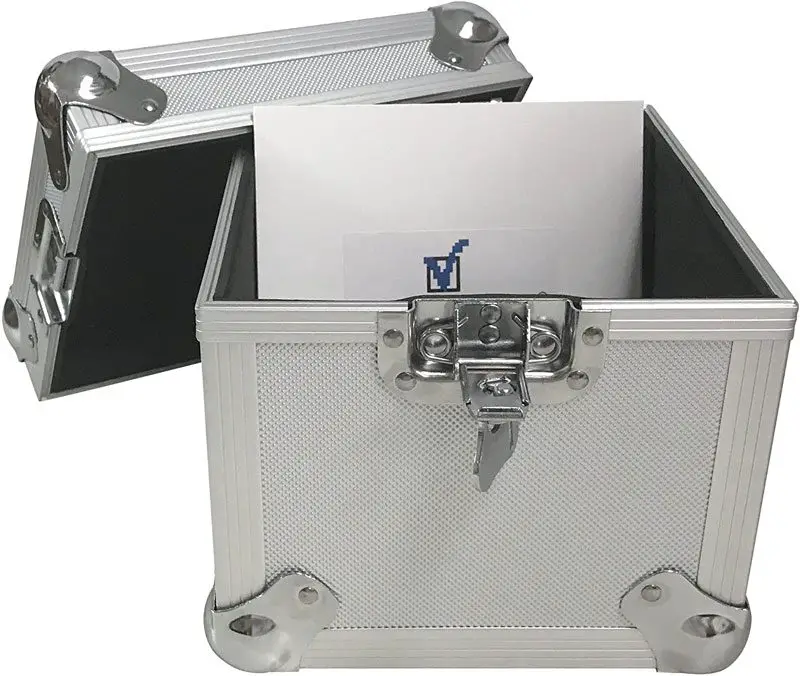
Regarding sleeves for 7-inch singles, you can store them to the same standard as your 12-inch LPs using polyethylene inner sleeves and polypropylene outer sleeves.
Big fudge makes a quality rice-paper style poly inner sleeve, and they provide great value as a pack of 50.
PART 2: Vinyl Record Storage Cabinets & Containers
Now that your favorite records are packaged up in their protective layers against airborne dust, you’ll need somewhere to store your collection.
Store records upright in a sturdy vinyl record storage cabinet, or a suitable set of boxes for storing vinyl records.
The key rules to remember are:
As established earlier, the fundamental rule about storing records in any unit is they must be stored vertically.
You’ll also want to avoid any excessive pressure on groups of records, even when stored vertically. That means you shouldn’t stack too many records in one compartment, and you should always leave plenty of space to easily flip through your records. Small compartments designed to help break up record collections are your friend in this instance.
Different-sized records are also best kept apart, so that means compartmentalizing your collection by 12″, 10″, 7″, etc. You can buy record dividers to help with space and separation if necessary.
Also, don’t overload your storage cabinet or container in a way that risks collapse. We don’t want any record landslides taking place!
Recommended Vinyl Record Storage Cabinets
For a full range of cabinet options, also check out our guide to the best vinyl record storage solutions.
In the meantime, below are our top picks to get you started. Almost any cabinet can become a great record storage unit, it just needs appropriately sized compartments, and it MUST be sturdy enough to support the weight of your collection.
IKEA Vinyl Record Storage
The easy option is to purchase an IKEA KALLAX shelving unit. These simple storage units are basically synonymous with vinyl records by this point, and they make great affordable storage for small to medium-sized collections.
They come in a variety of finishes and sizes, with each unit sporting perfectly sized compartments for housing records.
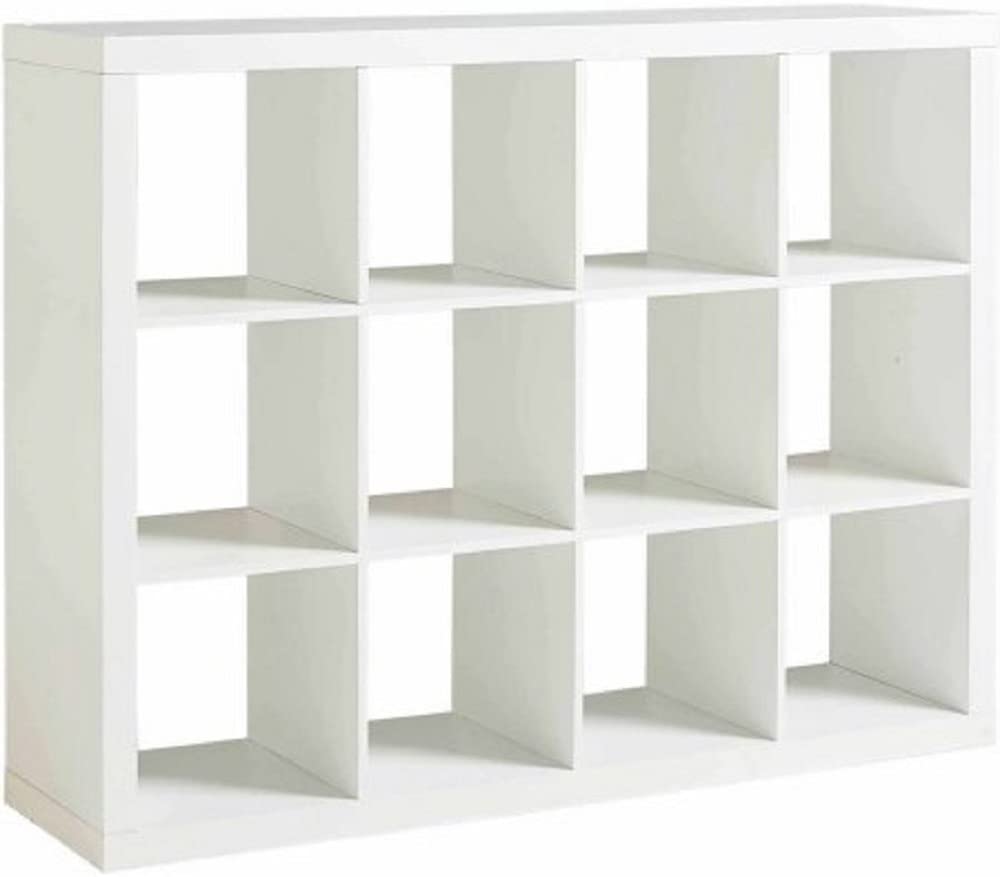
Having multiple compartments makes it easy to avoid excessive leaning, which can cause damage over time. If you go for a larger unit, you’ll have to be a little mindful of weight. IKEA recommends not exceeding 13kg for each shelf.
Added Support for Larger Collections: You can adapt IKEA units to support more weight by adding plywood to the back, this will add extra rigidity – particularly if you lay the unit on its side, where the unit is less secure.
If you want to be extra safe, you can also add L-shaped brackets under each corner.
Incidentally, IKEA makes plenty of other units suitable for vinyl record shelving, so if clean square boxes aren’t your thing, check out our article on IKEA record storage solutions for some further inspiration.
Go Mid-Century Modern For Record Storage with Style
The mid-century style really suits record cabinets. Helped by the fact vinyl was at its peak during the post-war mid-century modern art movement.
Check out this compact record unit with a sliding slatted door and walnut effect – pretty cool if you ask me! The drawers are a nice touch for storing vinyl accessories, such as your record cleaning kit. There are even some handy built-in dividers to help you break up your collection and avoid excessive leaning.

Up-Cycle a Vintage Cabinet for Bespoke Record Storage
Prefer something with a little more soul? Well, you could do what I did for one storage unit and try your hand at converting a retro storage cabinet.
Many mid-century cabinets look fantastic with a little restoration and a set of hairpin legs. Check out my conversion project for some inspiration.

Get Organised with Record Divider Cards
If you’re lucky enough to have a rather large collection of vinyl records, you might find it beneficial to invest in some divider cards and labels.
After all, nothing is worse than sifting through a large, unorganized collection looking for that one record you really want to play!
These heavy-duty divider cards are perfect for organizing your records and will save you potentially damaging album sleeves when digging for that one elusive album.

Long Term: Boxes for Storing Vinyl Records
If you’ve run out of space on your record shelf, or simply need to downsize or store for the long term, then overflow storage could be just the ticket.
When moving house, I highly recommend you invest in a few vinyl flight cases. At the very least, purchase sturdy plastic crates.
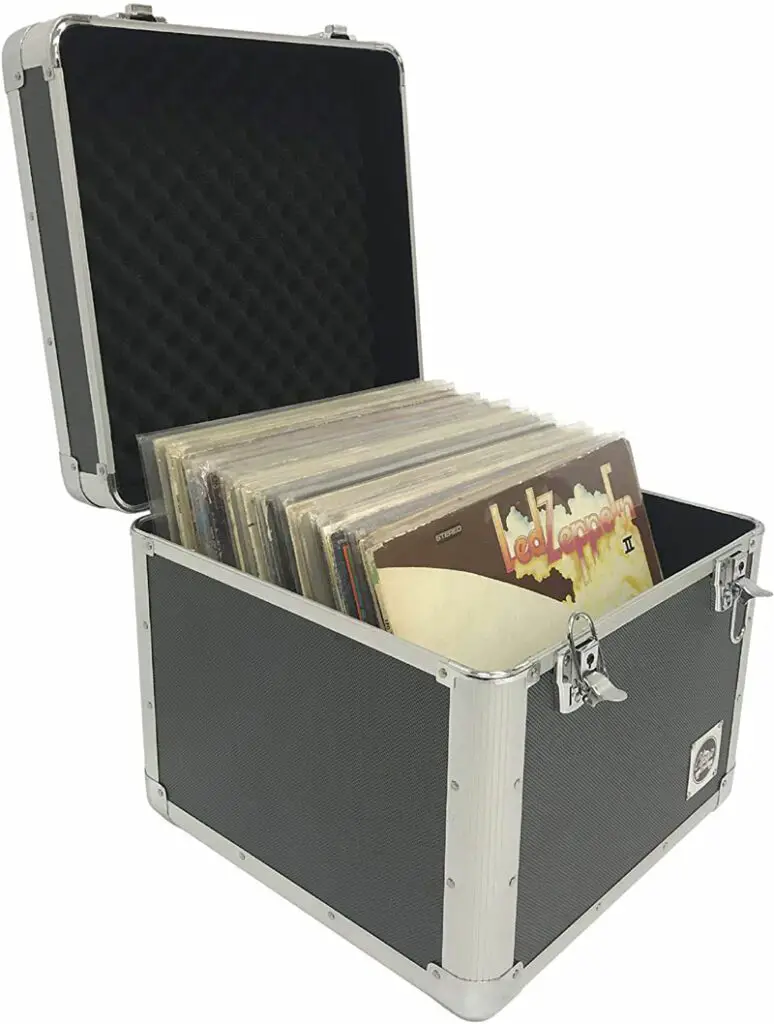
I see a lot of recommendations for cardboard U-Haul boxes, but in my opinion, these simply aren’t strong enough.
I like record storage boxes for overflow records or transporting records safely. However, if you’re going to store for a very long period, it’s best to avoid storage boxes that close air-tight, as the airflow is advisable to prevent the build-up of mold.
Also, remember to refer back to our storage environment recommendations at the beginning of this post. It stands to good reason that any records stored in an unstable temperature environment for a very long time will be susceptible to warping.
Garages, basements, and attics are spaces to avoid unless they are climate controlled and guaranteed to stay dry. The last thing you want to do is go digging for your long-lost collection only to find the covers water damaged and the vinyl bumpier than the rocky mountains!
PART 3: Creative Ideas for Storing Vinyl Records
Display Your Vinyl As Art
Looking for a way to display your vinyl as art?
Check out these innovative, frameless display products from Twelve Inch. Using simple magnets, you can easily display your vinyl in any listening space while still retaining access for regular playback. The lack of frames also gives your home a clean Scandinavian minimalist feel.
For obvious reasons, it’s important not to display vinyl records on a wall that receives direct sunlight, but when used on a shaded wall under stable temperatures, Twelve Inch vinyl wall displays bridge the gap between storage and display.
Sound Matters readers can enjoy 10% off Twelve Inch products when purchasing from twelve-inch.com. Simply use the code SOUNDMATTERS10 on checkout.
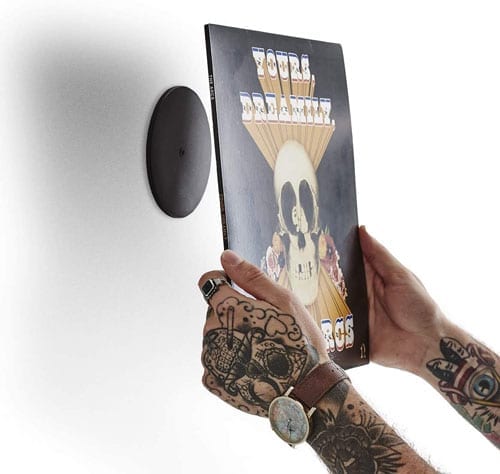
Do Records Fit in Milk Crates?
Years ago, it was fashionable to store vinyl records in milk crates, as the size is just about perfect for housing 12-inch LPs.
Eventually, it became illegal to simply take real milk crates, and so they’re quite difficult to come by these days. However, crates, in general, have a nice aesthetic, and you can pick up new ones for reasonable prices.
Check out this wooden crate below, which adds a creative touch to your record storage and is perfect for housing a few overflow records.

The Bottom Line: What is the best way to store vinyl records?
There’s no getting around it; collecting vinyl records is far from convenient. But as the saying goes, nothing worth having comes easy.
A huge proportion of vinyl record care comes down to correct storage; get this right, and you’ve won half the battle.
Want to suggest a storage tip that you think we’ve missed? Let us know in the comments below.

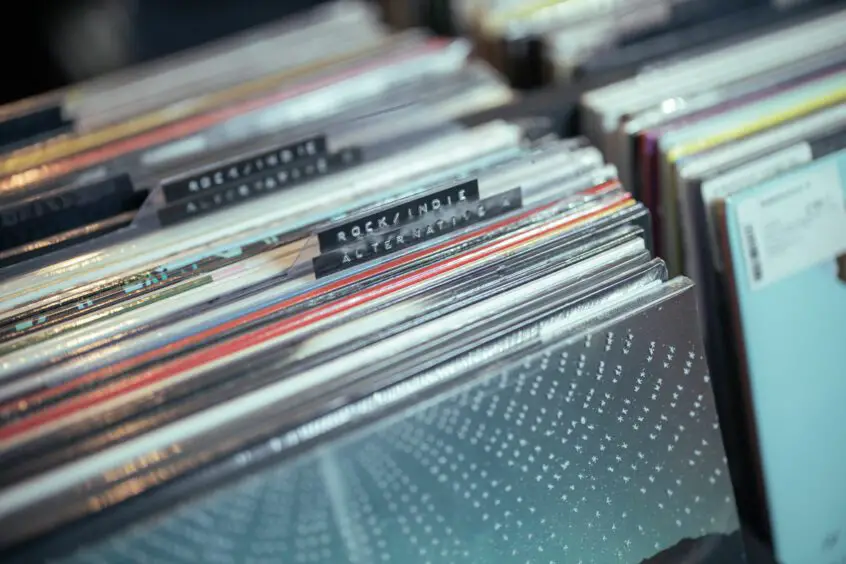


Milk crates are used in Australia. Ikea has some low cost options also. Or you can invest in a cabinet like this https://www.vinylstation.com.au/record-cabinet/jimi
Hi, I have my vinyl record collection stored in several Uhaul boxes in a safe temperature room. However, the room directly above the collection is my laundry room. My question is can I cover the boxes with a waterproof tarp in case I ever have a water leak from the laundry room.
I just discovered your website and I’m a newer vinyl collector. I had my vinyl (about 15) horizontally stacked for a few months. Did I damage did I damage them? How fast do the records warp? I stacked them vertically now, but really worried that they are all damaged.
You’d be able to tell if they were warped when you went to play them. A warped record is pretty easy to spot as it spins on the platter.
Hey Sophia. Sorry for only just getting to your comment here. As Mark says, you’ll see them “wobble” as they spin if they’re warped. A minor warp shouldn’t have much impact, but major ones can be very audible.
It depends on the storage conditions and weight as to how quickly they could warp and it would naturally have a greater impact on the records toward the bottom of your pile.
Hopefully, they came out ok. Ultimately, if they still sound O.K to you, then I’d continue to enjoy them and just avoid storing them horizontally in the future. Welcome to the hobby. I promise it’s worth all the hard work 🙂
[…] a detailed guide on how to look after your vinyl records, how to clean vinyl records, and store your collection, consider starting with the Sound Matters guides on this […]
Just one note of warning about the Kallax from IKEA. Even though it looks like it can be set up in any direction that is NOT the case! In fact, in the picture in the article the 4×3 Kallax is laying on its side. The 4×3 Kallax, for instance, is constructed with 3 full-width panels and 8 short ones. The 3 longer panels will stretch from side-to-side across the whole unit, while the 8 short panels will support the weight of the longer shelves. If you lay the unit on its side, as pictured in the article, the only thing holding up the individual record shelves are the 4 little dowels that connect the shelves to each other. Just Google “Kallax records collapse” and you’ll see what I mean! The larger the unit the more important this becomes.
I own the 4×3 Kallax and have reinforced it with a 1/8″ plywood back. Not only does it seriously strengthen the unit, but it provides a back you can push your albums against so they don’t fall out the back – plus it looks better!
Great point added, Jordan. The Kallax is well-known for weight issues, particularly if you go for a larger unit and fill it. 13kg (or 28Ibs) per square seems to be the recommended max-weight. 4 dowels holding each unit could easily give way as you say.
Adding the plywood back makes a lot of sense for strength. Do you find it stays strong on its side with this modification?
Originally I had added a couple of ‘L’-braces to two of the corners and two ‘T’-braces in the middle figuring the Ls would keep it square and the Ts would keep the sides from bowing out. It was sturdy but I was still a bit wary. At the time it was only about 75% full. When I moved recently, I took advantage of having to unload it all to add the plywood. I removed the L- and T-braces and used 1/4″ screws all around the perimeter about every 6″ or so, plus a couple at the middle shelf. I also put in a small bracket from the wall to the shelf to keep it from tipping forward. This didn’t seem likely but why take a chance, right? Now it’s clearly much more sturdy than it was and I have no trepidation about loading it up to capacity. However, I wouldn’t even think about laying it on its side after I read about the collapses. It’s pure luck that when I set it up originally that I had it vertical since that’s what fit the space. It’s just not worth the risk to me.
If I had my druthers, and a lot more money, I’d buy the Symbol Audio stuff. Wow. I also like the Mapleshade modular units. Not outrageous and you can expand it as your collection grows.
(BTW, is there a way to get a notification when someone responds to my comments? Didn’t realize you had responded until just now – a week later!)
I am currently using polyethylene outer sleeves. Are they as good as polypropylene ones you recommend?
Unfortunately, if you want to order those sweet magnet displays, you can do it directly from them, into the US anyway. I was going to order the 4pack eco pack, but they wouldn’t ship to me sadly. Those look great though. any other suggestions like those?
Hi David. I’m in touch with the owner of Twelve Inch, so let me send them a message and check what their US distribution plans are.
[…] polyethylene inner sleeves, and polypropylene outer sleeves as the best way to protect and store your vinyl records. But what if they could be […]